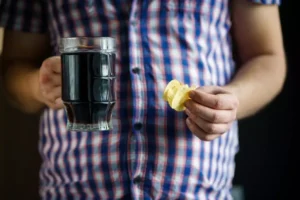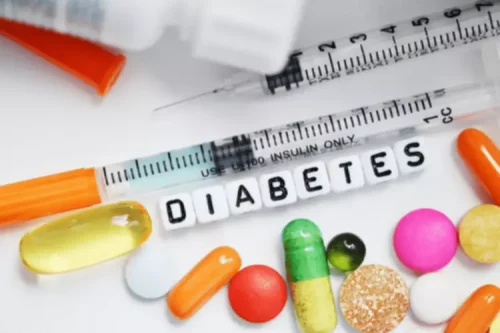Alcohol Withdrawal: Symptoms, Treatment, and Support

The doctor will be able to provide you with information about safe ways to reduce your alcohol intake, and they will also be able to signpost you to specialized sources of support for people with alcohol use disorders. During alcohol detox, medication can ease your discomfort and prevent symptoms from worsening. According to Hilary S. Connery, MD, PhD, the clinical director of the division of alcohol, drugs, and addiction at McLean Hospital in Boston, withdrawal medications are suitable for most people. Talk to your doctor or a drug treatment specialist about what to expect as you experience alcohol withdrawal. Ask your doctor whether any medications may help in the process.
- When that person cuts out alcohol, there is a period when their brain hasn’t yet received the message and still overproduces the stimulating chemicals.
- Long-term treatment of AUD should begin concurrently with the management of AWS.8 Successful long-term treatment includes evidence-based community resources and pharmacotherapy.
- In co-morbid patients taking other medications such as β-blockers, significant changes in vital signs (blood pressure and heart rate) can be masked and appear normal.
- So, treatment may also include electrolyte corrections and multivitamin fluids.
Withdrawal delirium
When you drink, the alcohol suppresses certain neurotransmitters in your brain. Keep a list of emergency phone numbers on hand that includes contact info for your doctor, the police, a nearby hospital, and someone you trust. And consider joining a support group such as Alcoholics Anonymous. Once you stop drinking, though, the sudden change may come as a shock to your brain, which altered some of its chemistry to make up for the alcohol’s presence. Delirium tremens (DT) is the most severe form of AWS and occurs in 5% of people with AWS.

Alcohol use disorder
Approximately one-half of patients with alcohol use disorder who abruptly stop or reduce their alcohol use will develop signs or symptoms of alcohol withdrawal syndrome. The syndrome is due to overactivity of the central and autonomic nervous systems, leading to tremors, insomnia, nausea and vomiting, hallucinations, anxiety, and agitation. If untreated or inadequately treated, withdrawal can progress to generalized tonic-clonic seizures, delirium tremens, and death.
Who is at risk for alcohol withdrawal syndrome?

It also includes binge drinking — a pattern of drinking where a male has five or more drinks within two hours or a female has at least four drinks within two hours. The administration of these drugs as monotherapy could mask AWS symptoms and reduce CIWA-Ar scores with a consequent reduction of the prescription of BZDs and possible risk to develop complicated AWS. Furthermore, patients with reduced level of consciousness (i.e. trauma and general surgery patients) at risk for AWS have to be monitored for the appearance of AWS symptoms, and safely and effectively managed [24, 25]. People who have severe withdrawal often need to go to the hospital. Your doctor can tell you what level of testing or treatment you need. This is a potentially life threatening complication for which you may require medical attention.
The duration of PAWS can depend on a range of factors, including the substance you used and how frequently you used it, as well as your support system. The available research suggests that some symptoms of opioid-related PAWS can last for weeks, and in some cases, 6 to 9 months alcohol withdrawal syndrome symptoms after last use. According to the research, these symptoms can endure weeks or even months after discontinuing use. This, as well as impulse control disorders, can last up to 4 weeks after discontinuing use. Other symptoms, though, can last months after discontinuing use.

Benzodiazepines carry a Food and Drug Administration boxed warning because there is a risk of dependence. If you’re prescribed a medication from this class of drugs talk with your doctor about the risks before taking them and always follow the doctor’s instructions. If your home environment is not supportive for staying sober, talk with your doctor. Your doctor may be able to connect you with shelter programs for people recovering from alcohol addiction. The first goal of treatment is to keep you comfortable by managing your symptoms. Your doctor’s treatment goal is helping you stop drinking as quickly and safely as possible.

What is the timeline for alcohol withdrawal symptoms?

We strive to create content that is clear, concise, and easy to understand. In extreme cases, the brain can have problems regulating breathing and circulation.
Additionally, the activation of brain and nerve cells can result in hyperexcitability. PAWS refers to prolonged side effects that some people experience following alcohol withdrawal. However, it is important to note that the exact timeline for withdrawal symptoms can differ for each person. If you’re planning on decreasing your dependence on alcohol, consult your doctor. They can recommend inpatient or outpatient care, depending on your current health status. Most symptoms will typically peak five days after they begin and will begin to decrease about five to seven days after they begin.
Management and Treatment
- DT could be responsible of injury to patient or to staff, or of medical complications (aspiration pneumonia, arrhythmia or myocardial infarction), which may lead to death in 1–5% of patients [32, 33].
- It also provides an overview of the alcohol withdrawal timeline process and when to discuss your drinking with your healthcare provider.
- Vitamins such as thiamine and folic acid will need to be supplemented.
- There are many support options available that can help guide you through alcohol withdrawal, as well as abstaining from alcohol after withdrawal.
This article discusses alcohol withdrawal, its symptoms, and potential complications. It also provides an overview of the alcohol withdrawal timeline process and when to discuss your drinking with your https://ecosoberhouse.com/ healthcare provider. The best way to prevent AWS is to avoid regular heavy drinking. If you already have alcohol use disorder, it’s important to seek counseling and medical care as soon as possible.
